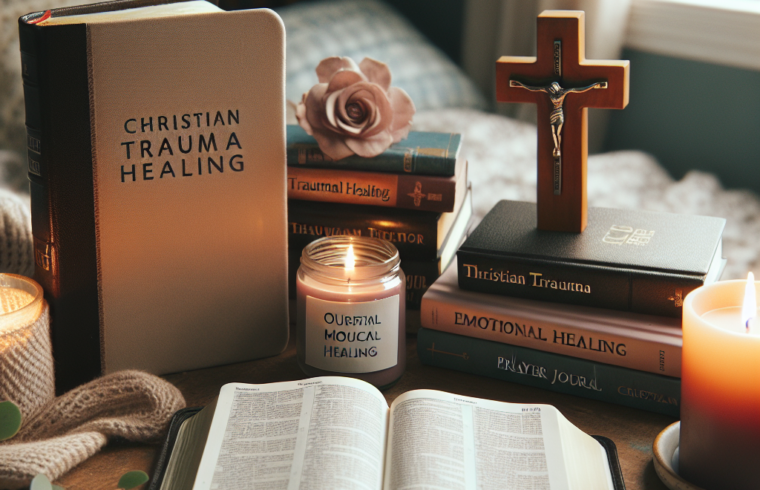==> Thank you for reading this post! Click Here If you are looking for support and Victory over PTSD.
Understanding Trauma in a Christian Context
What Does Trauma Look Like?
When we talk about trauma, especially in the Christian community, it can be a bit confusing. People often think trauma only comes from big, life-altering events. But truthfully, trauma can be as subtle as feeling abandoned or rejected. Understanding what trauma looks like in various forms helps us identify it in our lives.
I remember the first time I realized I was dealing with trauma. It wasn’t from something drastic like a car accident; it was the fallout of a close relationship that didn’t work out. I felt completely lost. Knowing that it’s okay to feel this way—in fact, it’s a normal human response—lifted a huge weight off my shoulders.
By recognizing the signs and effects of trauma, we pave the way for healing, especially through our faith. It’s crucial to realize that our experiences, big or small, are valid and deserving of attention.
The Role of Faith in Healing
Faith can be a powerful tool in the healing process. For me, turning to scripture during tough times has always provided comfort. Passages like Psalm 34:18 remind us that God is near to the brokenhearted. Feeling that presence made me realize I wasn’t alone in my struggle.
Healing with faith also involves community. Whether it’s a trusted friend or a church group, sharing our burdens makes them lighter. I’ve found that vulnerability fosters deeper connections and understanding; it opens doors to healing—spiritual and emotional.
Furthermore, spiritual practices such as prayer and meditation can ground us. They help reset our minds and refocus our thoughts, creating a divine dialogue that nurtures our souls while we process our trauma.
Overcoming Stigmas Around Trauma
One of the biggest hurdles in confronting trauma is the stigma attached to it, especially in some Christian circles. People might feel ashamed or guilty for their emotional struggles. Trust me; I’ve been there. Overcoming this stigma is essential for recovery.
We have to create spaces where sharing our experiences is normalized. The more we talk about it, the more we chip away at the misconception that faith excludes struggle. It’s all part of the human experience, right?
Having these conversations opens pathways for others to share their stories, too. Each narrative adds a piece to the broader understanding of trauma and healing, encouraging a culture of support and compassion.
Connecting with Professional Help
Choosing the Right Therapist
Finding a therapist who understands both trauma and faith can be a game-changer. I’ve had to sift through a few options to find someone who respects my beliefs while also practicing effective psychological methods. You want to feel safe and understood.
It’s important to ask questions during your first meetings. I used to inquire about their experience with faith-based approaches, and how they incorporate spirituality into their practice. This dialogue can help you gauge if it’s the right fit for you.
Remember, it’s perfectly okay to seek help outside of the church setting. Professional guidance complements our spiritual journey and often leads to more profound healing processes.
Benefits of Group Therapy
Group therapy has this magical way of connecting people who share similar burdens. My experience in group sessions was eye-opening; hearing others express their feelings made me feel less isolated. You realize you’re not alone, and together, you can work through your trauma.
There’s something incredibly powerful about collective healing. Sharing, listening, and growing together fosters a sense of community that one-on-one therapy sometimes doesn’t offer.
Being part of such a group can reinforce your faith as you witness the transformations within your peers. Encouraging each other, praying together, and sharing hope makes the journey feel less daunting.
Combining Therapy with Spiritual Practices
In my experience, merging professional therapy and spiritual practices has been impactful. I’ve found that many therapists encourage the inclusion of spiritual exercises in our healing journey. For instance, journaling prayers or using scripture as a guide can provide clarity.
These combined practices create a holistic approach to healing, addressing both the mental and spiritual aspects of trauma. It’s like having two different but complementary support systems.
The key is to find what works best for you and allows for personal exploration and growth. Whether through meditative prayers, scripture reading, or even art, these practices can significantly lighten your emotional load.
Building a Supportive Community
The Importance of Sharing Your Story
Sometimes, the most freeing thing we can do is to share our stories. I’ve found that opening up about my experience with trauma not only helps me but encourages others too. It’s liberating to lift that weight off your chest!
Story sharing encourages empathy and understanding among members of the church and beyond. It creates a bond of shared experiences, which is invaluable in healing.
Even if it’s just in a small circle of friends, speaking truthfully about our struggles can lead to growth and create a safe environment for others to do the same. Your story could very well light the path for someone else.
Get Support and Help with Recovery! Visit us for more Information and Support
Finding Your Tribe
Building a supportive community is about finding those who genuinely understand and support you. I realized that connecting with like-minded individuals made such a difference in my healing process. It’s comforting to have a solid foundation of people rooting for you.
Cultivate relationships through small groups, Bible studies, or community service projects. Each interaction can help build a network of support that is crucial in this journey of healing.
The ultimate goal is to create an environment where spiritual and emotional healing can flourish with love and encouragement, reinforcing the idea that we are not alone!
Encouraging One Another
A supportive community thrives on encouragement. From simple gestures like a friendly text to a deeper conversation during coffee, these little acts can significantly uplift someone struggling with trauma.
I often remind my friends that being there for them is just as important as sharing my own healing journey. It’s a two-way street that fosters mutual growth and reinforces our bonds.
As we encourage one another, we foster an open dialogue about struggles and victories. Celebrating healing moments can motivate others to pursue their paths with faith and determination, creating an uplifting atmosphere for everyone.
Navigating the Journey of Healing
Recognizing the Stages of Healing
Understanding that healing is a journey with ups and downs has been eye-opening. I learned that it’s okay to feel different emotions at different times. Recognizing these stages helps us to navigate our healing paths with more grace.
Sometimes, I found myself stuck in certain stages, only to realize that it was a natural part of the process. Accepting this has brought me more peace, allowing me to let go of unrealistic expectations.
As we move through these stages, trust that God is on this journey with us. He guides, supports, and sometimes even pushes us to face our struggles head-on.
Setting Realistic Goals
As we embark on the healing journey, setting achievable goals can be incredibly beneficial. I’ve learned not to overwhelm myself with grand expectations. Instead, breaking my goals into small, manageable bites helps one step at a time.
Each tiny win adds up and reinforces our motivation. Celebrating these small victories fuels our desire to continue on the path of healing.
These goals don’t have to be rigid; they can be flexible reflections of where we are in our journey. So, as we grow, we adjust these goals accordingly, inviting growth and new challenges.
Creating a Personal Healing Plan
Developing a personal healing plan tailored to my needs has been a game-changer. I blend various aspects—therapy, community involvement, spiritual practices, and self-care activities. Tailoring it makes the journey feel more intimate and purpose-driven.
Sometimes, I revise my plan based on what I feel is working or what’s not. Flexibility is key! It keeps me engaged and focused on what truly matters in my healing process.
And, of course, this plan aligns with my faith. Seeking guidance through prayer has made it even more fulfilling.
Frequently Asked Questions
What is the first step in healing from trauma?
The first step often involves recognizing and acknowledging that you’ve experienced trauma. This awareness can open doors for personal reflection and help you seek the support you need.
How can faith play a role in the healing process?
Faith provides a sense of hope and community. Many find comfort in prayer, scripture, and the support of fellow believers as they navigate their healing journeys.
Is seeing a therapist necessary for healing trauma?
While it’s not mandatory, many people find that therapy significantly aids their healing process, offering tools and professional guidance that complement their faith journey.
How can I find support within my community?
Look for small groups, Bible studies, or local events that focus on trauma awareness or healing. Connecting with others who share similar experiences can create a strong support network.
What should I do if I feel stuck in my healing process?
If you feel stuck, it’s important to reassess your healing plan and consider seeking help, whether that be through a therapist, spiritual advisor, or trusted friends. Sometimes a new perspective can reignite your journey.













